Charlottesville is a beautiful, historic, and lively city in central Virginia. It’s where you’ll find the homes of some of the country’s first presidents, amazing vistas of the Blue Ridge Mountains, dozens of fine wineries, and appealing walking trails. Most of the trails detailed in this article are in historical settings. So you literally will be walking in the footsteps of some of the country’s founding fathers and others who lived long ago. Others lead walkers/hikers into other tranquil natural settings. Also, consider exploring more of the area’s fascinating colonial history and the many inviting area wineries.
“Of all the paths you take in life, make sure a few of them are dirt,” stated John Muir (1838-1914), an environmentalist and philosopher. These are good words to live by, and you can certainly find some great trails to trod in and around beautiful Charlottesville.
Charlottesville Area Parks
There are several walking trails in and around Charlottesville, including the Rivanna River Trail (a 4.3-mile flat, paved out-and-back trail with river views). Darden Towe Park also has other nice flat trails, river access, dog parks, playgrounds, and picnic areas. Discover all the area trail and park options at Charlottesville Trails Map.
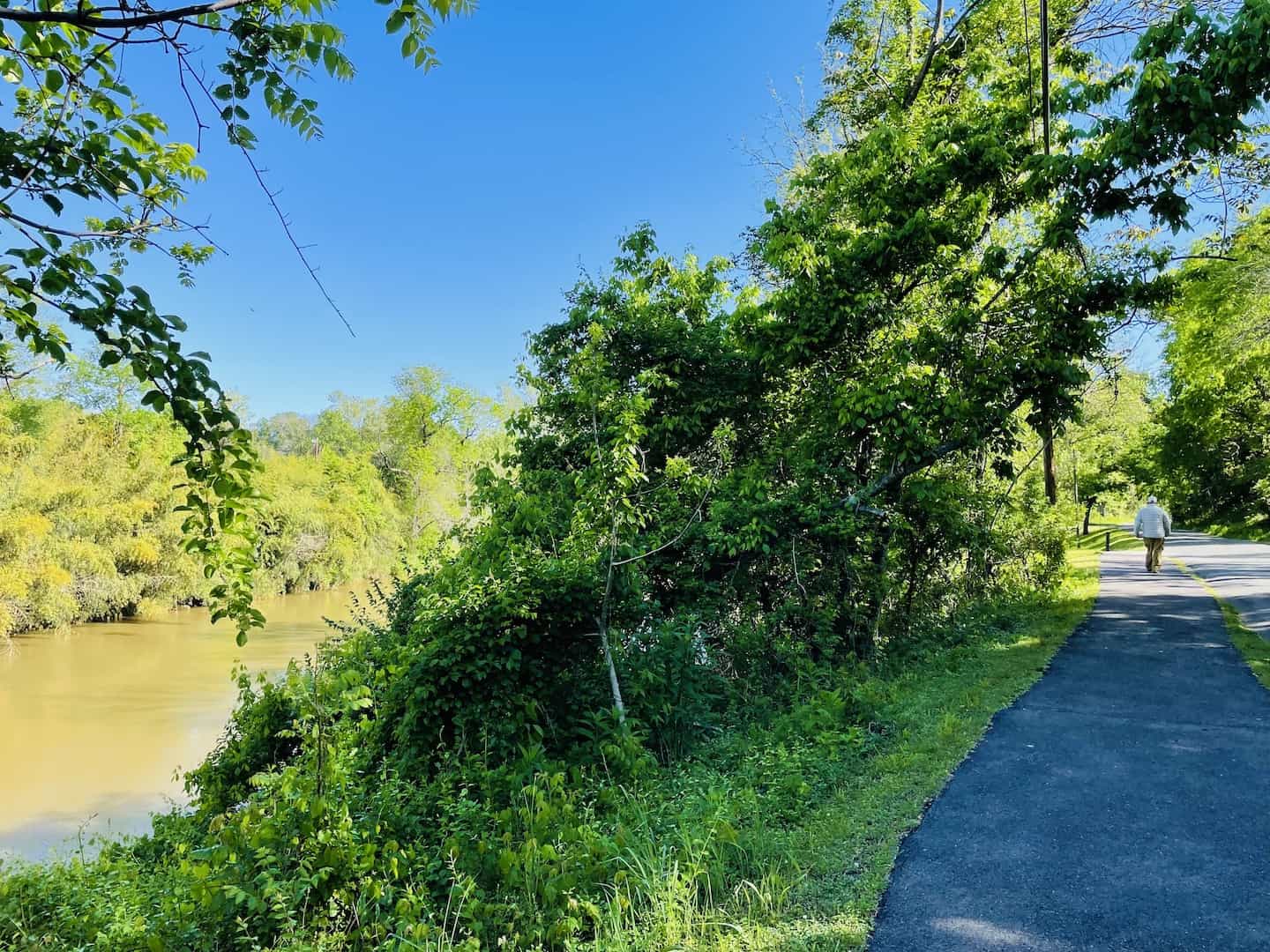
Ivy Creek Natural Area Trails
About 6 miles north of downtown Charlottesville, the Ivy Creek Natural Area offers 7 miles of trails on its over 200 acres. While walking here, you’ll be in mostly wooded areas. Several trails are offshoots of the main 1.7-mile Red Trail. Use the Ivy Creek trail map to see how to connect different trails together to get the workout you want.
Ivy Creek Natural Area was the site of River View Farm and the home of Hugh Carr and his family. Hugh Carr was born into slavery, but after gaining his freedom, he began to acquire land here in 1875. The Carr family lived on this land for generations. Still standing are the Carr family farmhouse, a family cemetery, and a barn built in the 1930s by Conly Greer, Hugh Carr’s son-in-law.
James Madison’s Montpelier Area Trails
Montpelier Estate Trails
There are 8 miles of trails at the Montpelier estate that lead you through meadows, horse pastures, the old-growth forest, and a pond. There’s the 3.55-mile Montpelier Loop Trail that takes you past the Annie DuPont Formal Garden, forest, and meadow. The 3.9-mile out-and-back Montpelier-Grelen Trail takes you to the Grelen market and cafe (see below). Montpelier trail visitors purchase a Property Pass (separate from the Montpelier house tour) to access the gardens, trails, and grounds.11350 Constitution Highway, Montpellier Station
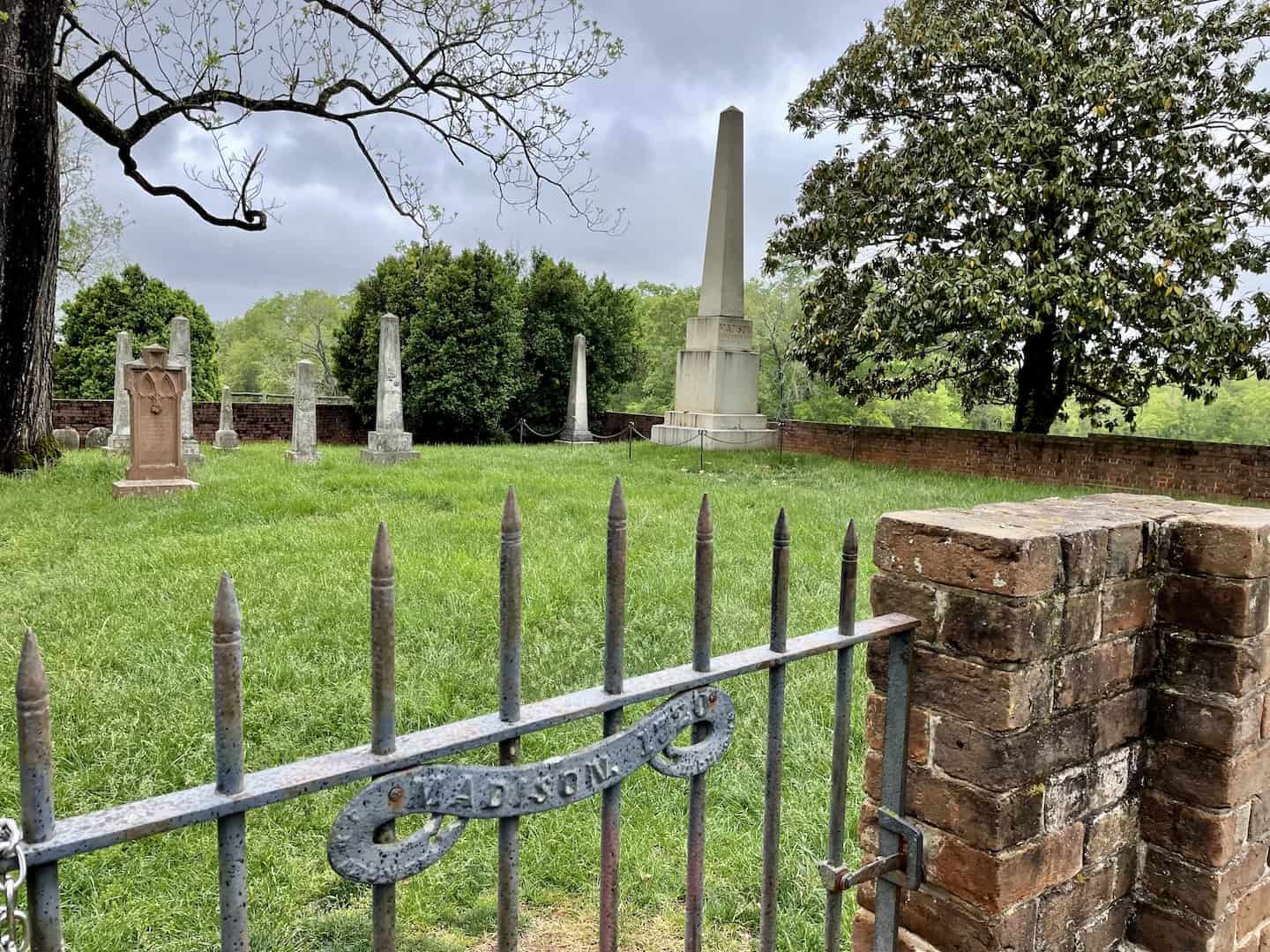
Market at Grelen Trails
Adjacent to James Madison’s Montpelier is another set of hiking options: the Market at Grelen trails. In fact, one of them connects to the 3.9-mile out-and-back Montpelier-Grelen Trail that offers some nice views. Buy the makings for a picnic lunch at the market, head out on your walk, and enjoy your feast at designated picnic spots on some of their trails. Grelen Market trails are free and open during the market’s business hours. 15091 Yager Rd., Somerset | 540-672-7268
James Monroe’s Highland Trails
Woodland trails at James’s Monroe Highland are free to the public. Expect trails ranging from the easy 0.3 to 0.5-mile pasture loops to the more challenging 2.5 Mountain Trail. Trails are open from 9:30 am to 4:30 pm most days and are free to use; trails may be closed after heavy rains. Check in at the visitor center before accessing a trail. Only service dogs are allowed on the trails. Highland is located close to Monticello in Charlottesville. 2050 James Monroe Parkway, Charlottesville | 434-293-8000
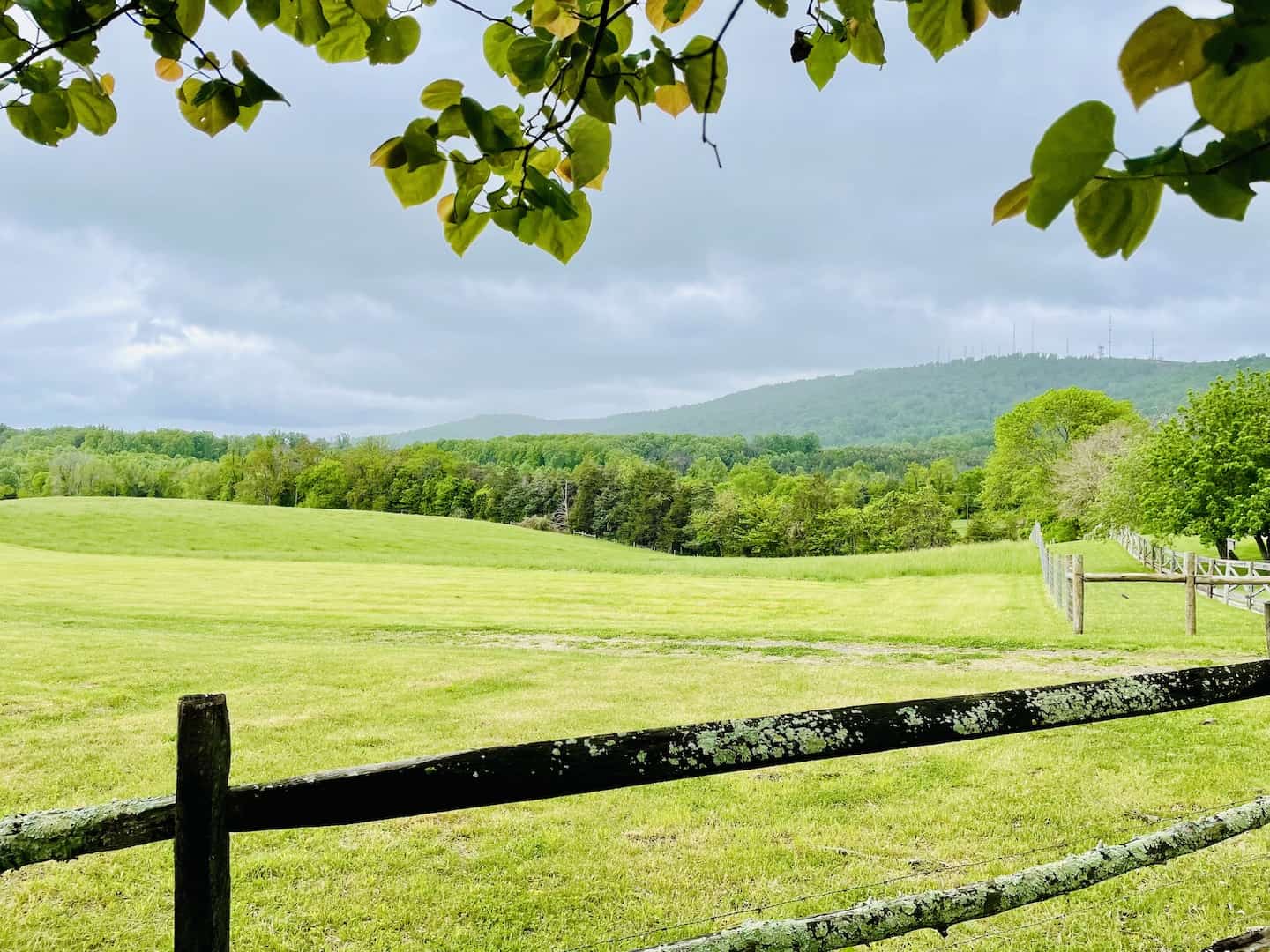
Thomas Jefferson’s Monticello Trails
The major trails in Kemper Park are packed gravel or boardwalk, although there are dirt trails (that are narrower) as off-shoots of the main Saunders-Monticello Trail (an out-and-back 4.3-mile walk/easy hike with a slight elevation gain of about 400 feet). The trails are open from 7:00 am to 5:00 pm (as of the publication date of this article).
You can either begin this walk at Monticello (after a visit there, perhaps) or access it from the parking lots at Kemper Park along routes 53 and 20. Restrooms are available at Monticello when it’s open. Leashed dogs are welcome on the trails but not on the boardwalks along the Saunders-Monticello Trail.
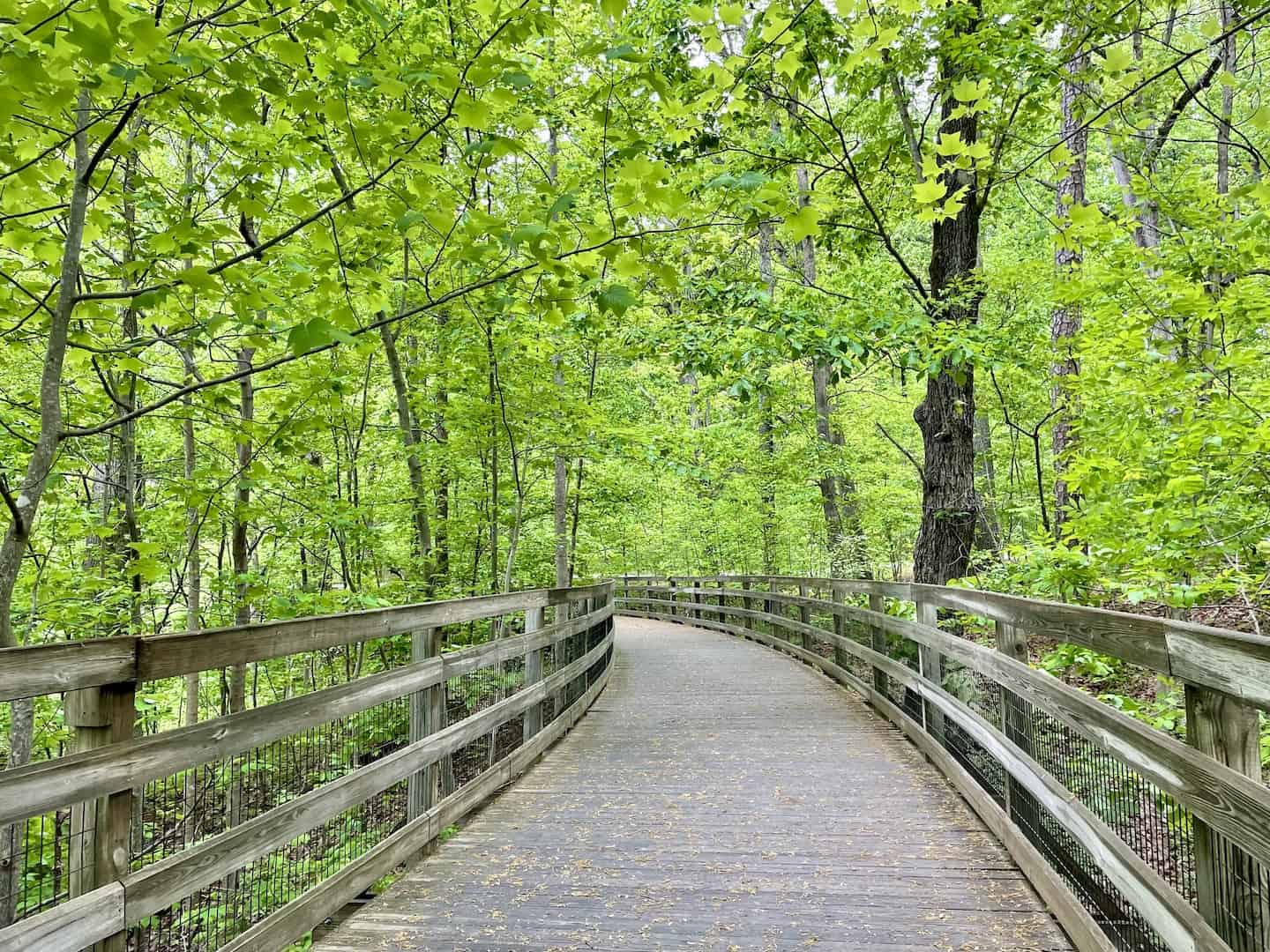
University of Virginia
Thomas Jefferson, the country’s third president, believed in the power of education and founded the University of Virginia (UVA) in 1819. It’s a sprawling campus now, but there’s a historical core that’s interesting to meander through. This includes the Rotunda with a dome room on the top level. Downstairs are some interesting displays and historical artifacts. Outside, outlining the Lawn (a huge grassy area) are original (and restored) buildings and small, interesting alcoves worthy of a look. This is a leisurely walk (along even terrain with some steps) where you can just enjoy walking on a beautiful, historic campus.
Start with a visit and self-guided tour of the Rotunda (tour pamphlets are available inside). Once back outside, walk the western edge of The Lawn to Old Cabell Hall. Then return via the eastern edge of The Lawn. You’ll pass the Pavilions and Lawn rooms that include student housing (a perk for seniors). Also, you’ll see several statues (including George Washington and Thomas Jefferson) set inside natural alcoves surrounded by trees.
Along the West Range area of dormitories on McCormick Street – parallel to The Lawn, is Room #13, which is memorialized as the room Edgar Allen Poe, a student here in 1826, occupied. It is furnished as it might have been at the time of his residence here. Nearby on McCormick Street is the Chapel (built in the 1880s).
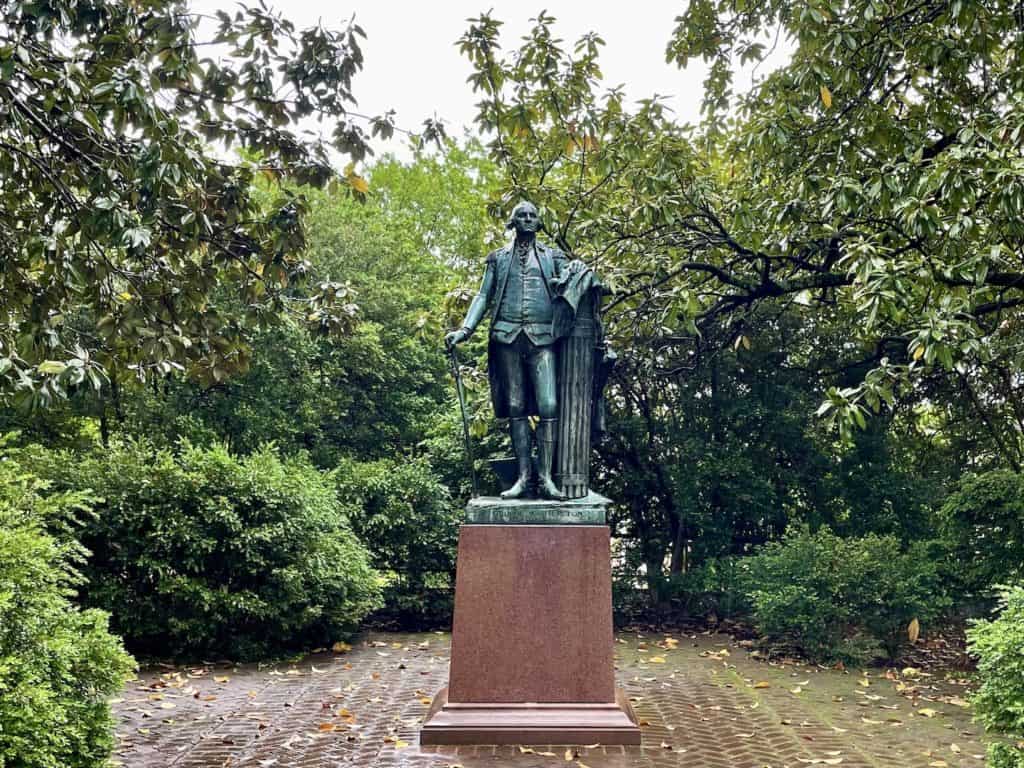
Another option is taking the self-guided Enslaved African American Walking Tour that leads visitors to spots on campus (most in the historical core area) where African Americans lived and worked. Learn about Henry Martin (who rang the university’s bell to wake students up in the morning and throughout the day, marking the hours) and others who played important roles at the university.
General Trail Tips
- Find the perfect trail with reviews at AllTrails.com. Download the app, and you’ll have all the information you’ll need at your fingertips. Also, using the app while hiking helps you see where you are relative to the end of the trail (are we there yet?!).
- Wear comfortable walking shoes with good tread. The trail can be slippery and/or muddy due to rain or melting snow (and it can snow in late September here).
- Bring plenty of water (and snacks).
- Wear a hat and sunscreen during warm, sunny days and bug spray to keep you bite-free.
- Dress in layers in chilly weather. You may peel off a layer if you get warmed up, but then you’ll be grateful for the layers once you reach the top, where it can be windy and chilly.
- Do not feed or otherwise disturb the wildlife.
- Stay on the trail. Leaving trails can expose hikers to tick-infested areas, poison ivy, and/or protected animal or plant habitats.
- Leave no trace! Carry out what you bring in. Do not leave behind any trash or food.
Related Articles
- Charlottesville – Explore America’s colonial history by visiting the estates of three of the country’s founding fathers, walking and hiking scenic trails, and visiting some notable wineries.
- Charlottesville Wineries: Sensational Sips in Virginia’s Heartland – Don’t miss some of the state’s best wineries and enjoy the combinations of delicious vintages, history, beautiful views, and great hospitality.
- The Historic Triangle: Jamestown, Williamsburg, Yorktown
- Mount Vernon: A Detailed Guide to George Washington’s Home – President George Washington’s home and farm. In addition to a tour of his home, visitors can visit his gardens, tomb, farm, unique 16-sided barn, wharf, and numerous outbuildings that supported the property and those who lived here — including enslaved people.
- Norfolk – Close to Virginia Beach, Norfolk is lively with three top attractions: Chrysler Museum of Art, Nauticus Maritime Museum (with a retired U.S. battleship to tour), and the Norfolk Botanical Garden.
- One Week in Historical Virginia – Consider our itinerary for a fabulous visit to this special part of the state.
- 16 Best Monuments and Memorials in Washington, D.C. – Visit a few or all of these great monuments, including the most recent ones. Use this guide to plan your visit!
Final Thoughts
My husband and I really enjoy our visits to Charlottesville. It’s filled with interesting colonial history and appealing trails (plus plenty of wineries, but I digress!). Walking the trails offer tranquil moments in nature – always time well spent for us. There’s something about walking the same grounds as our founding fathers (and others) that makes these walks so much more than enjoying nature. It makes me ponder their lives, accomplishments, struggles, and lasting legacies. Their words and actions shaped the earliest years of the United States – and are still relevant today.
Our daily pattern was to visit a historical home or site in the morning. Following that, we’d take a relaxing walk in the afternoon. More likely than not, we then headed to one of the dozens of world-class wineries in the area to “wine down” before heading out to dinner in the evening. That was the perfect itinerary for a visit to Charlottesville!
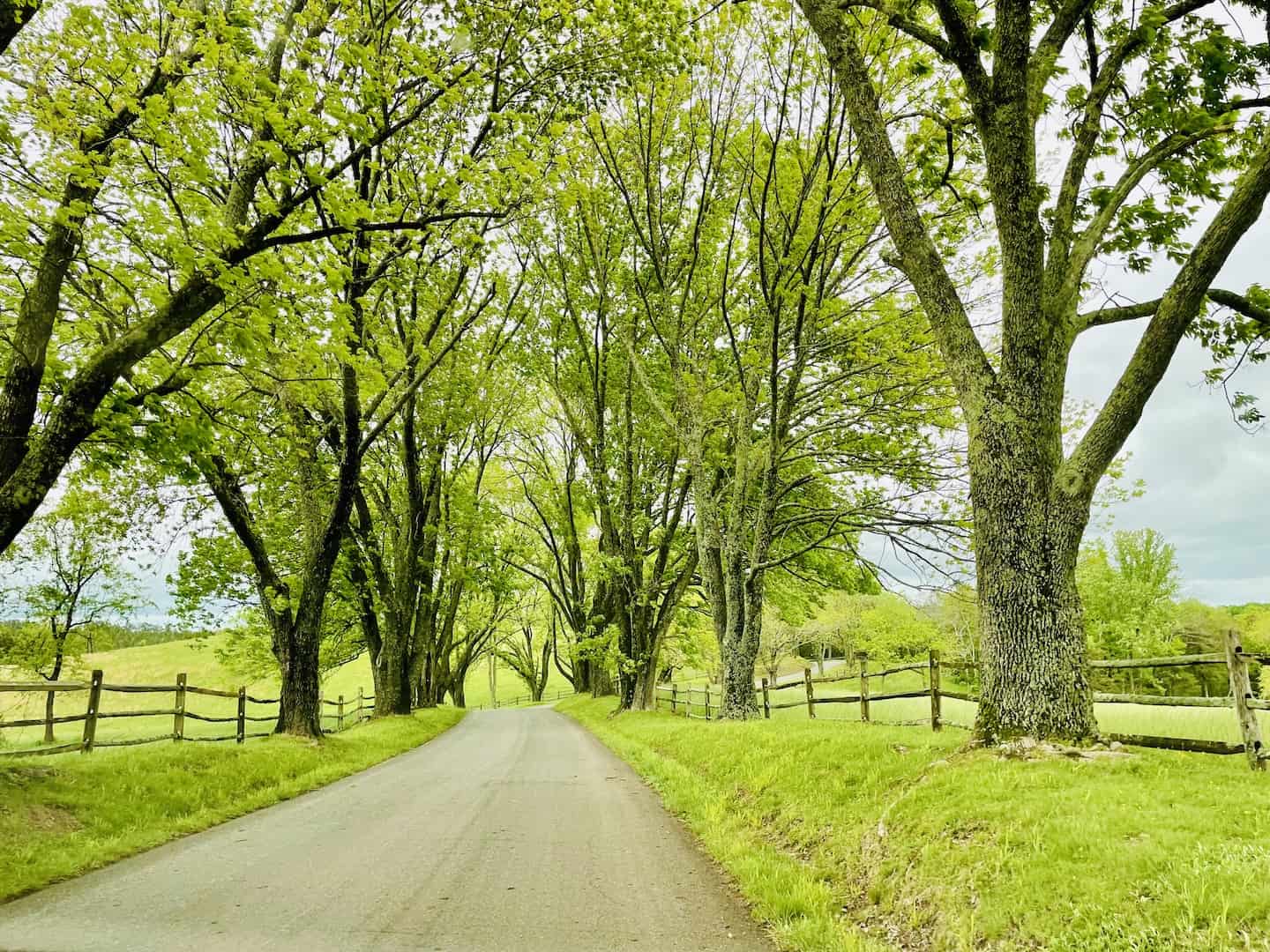
Comments?
Feel free to share your thoughts and experiences from a visit to Charlottesville and/or the general area. 🙂

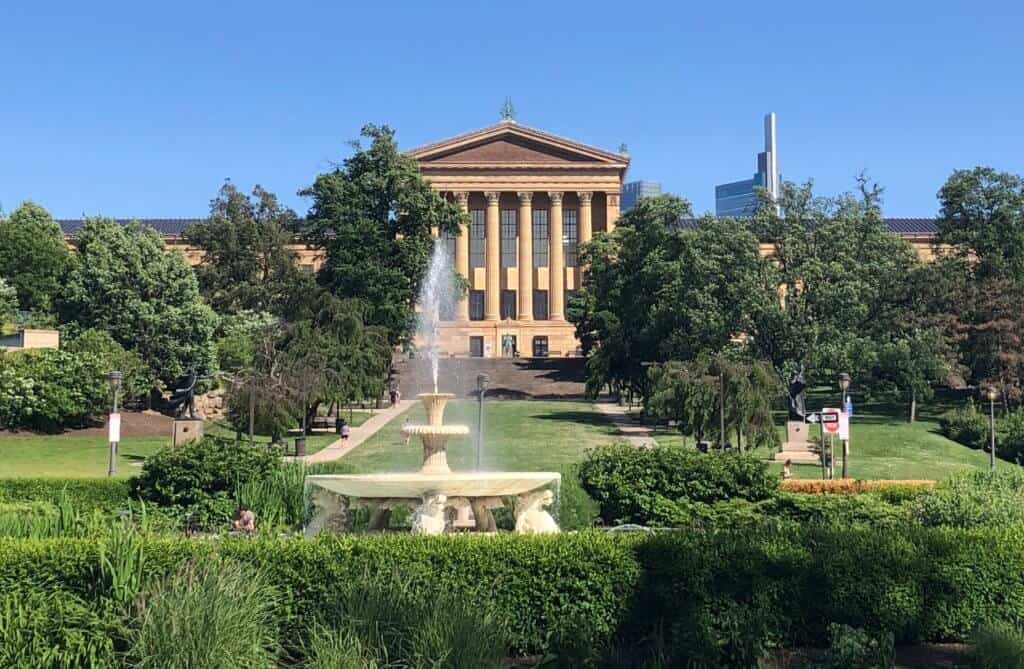
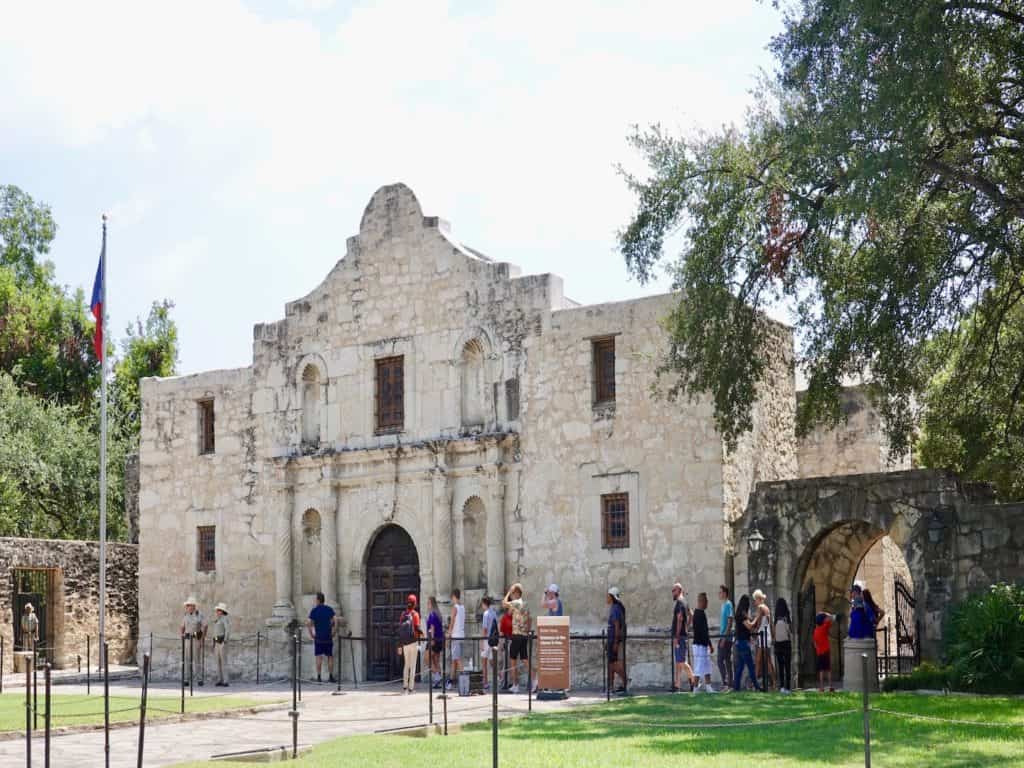
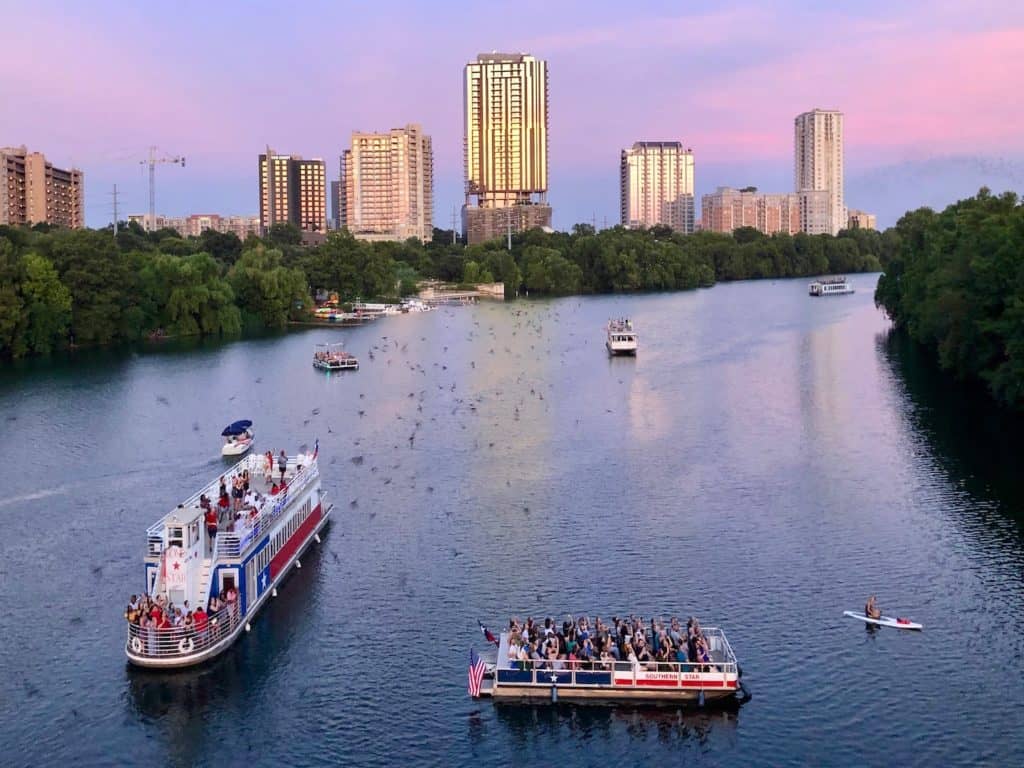
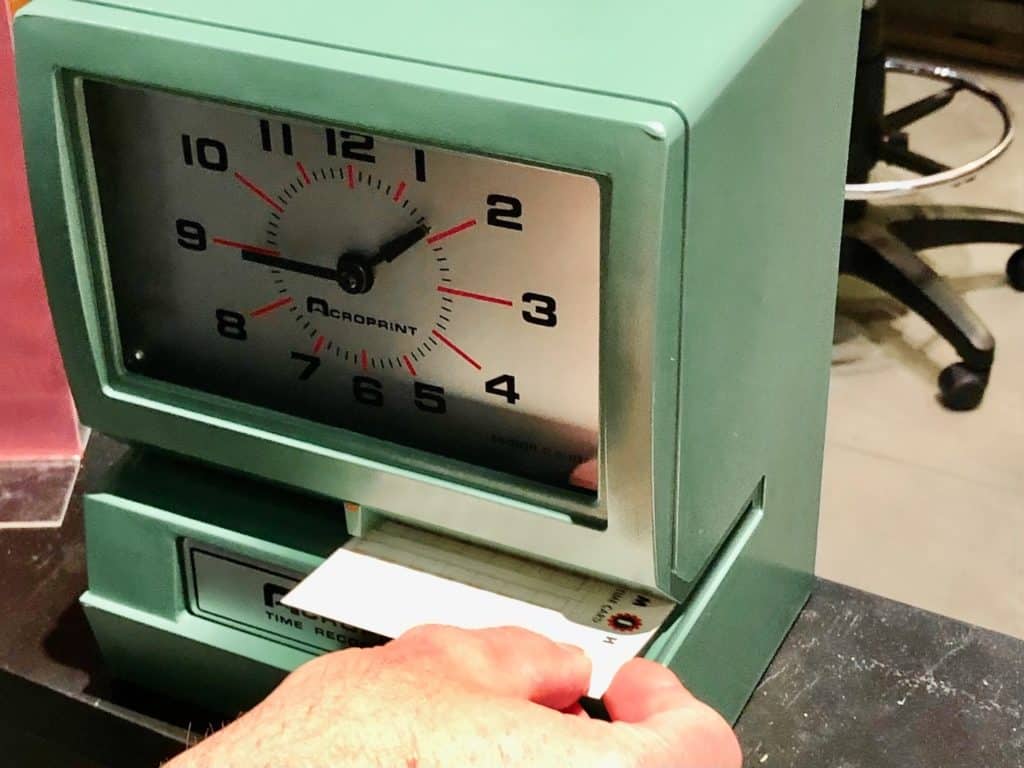
where is the pic w/fence in it? charlottesville?
Ava, I think you might be referring to the picture from James Monroe’s Highland property near Monticello.